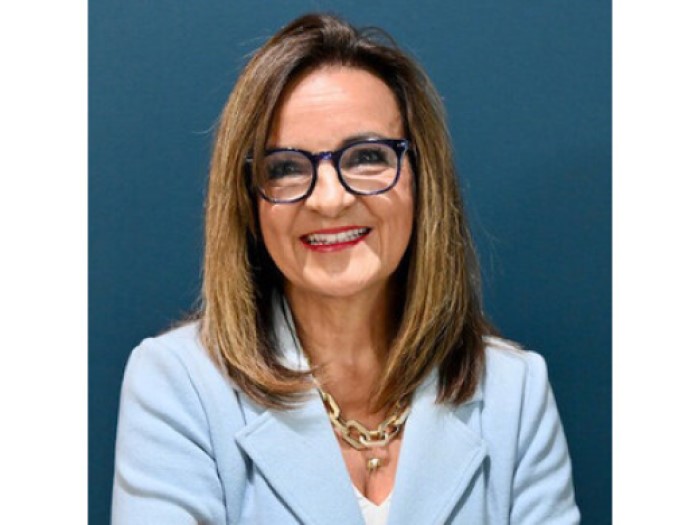Trouble on Board: DEI Promises Abound but How Prepared Are Companies to Meet Those Goals?

Two acronyms — DEI and ESG — have become ubiquitous in American corporate-speak over the last few years.
Many believe the movements toward bringing diversity, equity and inclusion into the workplace and toward considering environmental, social and good governance as equally important as company profits are long overdue.
Younger generations are demanding a more just society, one that’s capable of addressing the threats we face from a global climate crisis, and they’re looking to corporations to lead the way. If your enterprise doesn’t set ESG or DEI goals, you risk being left behind as millennials and Gen Z take their dollars elsewhere.
But as companies make ESG and DEI commitments that promise to benefit more than just their financial stakeholders, they may be opening themselves up to increased professional liability risks.
“Community, regulators, investors, consumers and activists — their expectations are very, very high,” said Peter R. Taffae, MLIS, CFE, managing director of Executive Perils. “There is concern from the directors and officers liability standpoint that the representations that they’re making today will come back and haunt them.”
If a firm fails to fulfill its promises they may be faced with shareholder derivative lawsuits from investors alleging that the company’s directors and officers lost the company money with their poor governance.
Numerous studies by Lucian Bebchuk, a professor at Harvard Law School, have found that corporate policies continue to benefit shareholders and corporate leaders with little gains for employees, consumers and other shareholders firms are pledging to look out for in their DEI and ESG statements.
“That’s a problem I have with ESG. So much of it is just marketing and not really real substantive activity,” said Kevin M. LaCroix, Esq., executive vice president, RT Specialty, RT ProExec Practice.
While a broad focus has been more on how these lawsuits are used to hold corporations accountable for damage caused by global climate change, few have focused on how firms are failing to meet DEI promises.
From CSR to ESG
The march toward corporate ESG disclosures began after the recession in the early ’90s. At the time, companies were realizing that analysts gave their firms a higher valuation if they included more comprehensive information in their reporting, according to Nir Kossovsky, co-founder and CEO of Steel City Re.
“Companies that disclosed things about themselves beyond the corporate financials were more attractive to buy-side analysts,” he explained. “The principal point was that by painting a picture of a thing a company cared about beyond just the financials and communicating it in some way would create additional value.”
Soon after, this “extra financial information” became known as corporate social responsibility. The UN used the term ESG to describe these sorts of actions in its 2006 Principles for Responsible Investment report, and the new term took off.
DEI falls under the “governance” portion of ESG. More diverse companies bring a variety of perspectives to the table, maximizing opportunities for innovation and fresh ideas. After the murder of George Floyd in 2020 by former Minneapolis police officer Derek Chauvin, consumers pushed companies to increase their commitments to ending racial injustice and championing diversity, equity and inclusion in the workplace.
“ESG is all about setting expectations for better environmental stewardship, better social justice, more dutiful governance. The risk arises from some failure to understand stakeholder expectations — the failure to set those expectations, and failure to meet them.” — Nir Kossovsky co-founder and CEO, Steel City Re
Companies from JPMorgan Chase to Sephora made statements or took actions to gesture toward their support for an end to racial injustice in America.
Many corporate boards made promises to diversify — 59% of S&P 500 companies disclosed the racial diversity of their boards in 2021 — but their efforts to date have been tepid. More than 75% of these board members identified as white, TIME reported.
“Stakeholders need to know that they’ve been heard,” said Denise Williamee, Steel City Re’s vice president of corporate services.
“It all comes down to sending the right signal to the stakeholders that matter the most, the ones that are paying attention and not over-promising or under-delivering.”
Board Diversity Lawsuits: Have They Been Met with Success?
With such an abysmal amount of racial diversity on the boards of S&P 500 companies coupled with weighty promises to diversify, directors and officers are right to be asking whether or not they could be opening themselves up to increased litigation.
Facebook, Oracle and The Gap all faced shareholder derivative suits alleging the companies failed to meet their DEI goals and thus put investors’ dollars at risk with poor governance decisions, JD Supra reported.
“With respect to any policy that a company announces, they run the risk of scrutiny and even litigation if they don’t follow through,” LaCroix said.
The legal risks of failing to live up to ESG promises are well documented. A number of firms have been accused of “greenwashing,” or overcommitting on sustainability promises, according to legal filings.
“Greenwashing essentially is a shorthand term to describe practices companies adopt where they try and wrap themselves up in the mantle of being good ESG citizens, but in fact, it’s just window dressing,” LaCroix said.
Over the past two years, D&O policies saw price increase between 5%-25%, depending on the type of business and what layers of coverage had been purchased, per analysis from Milliman Actuaries. These price increases are largely driven by increased litigation and soaring nuclear verdicts.
“I think the mistake that many underwriters are making, not all but many, is that their emphasis is more on the statements of what [companies] say they are going to do versus how they will deliver on those expectations,” Taffae said.
So far, many of these cases have been dismissed as companies’ DEI commitments are often too vague to serve as fodder for lawsuits.
But that could change in the near future. Nasdaq recently enacted a rule that requires firms listed on the U.S. exchange to disclose the gender and racial makeup of their boards. Boards without at least two diverse members will have to provide an explanation as to why they have failed to meet this quota, Fortune reported.
The Lasting Impact of Reputational Risks
Shareholder derivative lawsuits aren’t the only way firms lose money for failing to diversify. Millennial and Gen Z talent may boycott a particular brand or product if its maker has allegedly engaged in sexist or racist hiring practices, which can hurt companies’ profits.
A lack of diversity can also be a disadvantage when it comes to hiring. Last year, 76% of employees and job seekers said a diverse workforce was a top consideration when evaluating companies and job offers, The Washington Post reported. With the Great Resignation still going strong, employers need to be cognizant of the role diversity, equity and inclusion plays in their ability to attract and retain talent.
“Liability insurance covers the litigation, but reputational damage manifests in many other ways, all of which have economic consequences,” Kossovsky said.
One way companies can protect themselves from the reputational risks associated with DEI is by setting targeted goals and meeting them. “You have to ask your stakeholders what they expect and know what they expect, and you have to meet those expectations,” Williamee said.
Courtney Townsend, chief people officer at Duck Creek, an insurance technology company, believes that businesses need to ensure they have senior leadership buy-in in order to make progress on DEI goals: “You don’t just need buy in, but believe in.”
This year, she helped facilitate Duck Creek’s inaugural Diversity Summit, which allowed employees and senior leadership to come together so that they could all communicate about the importance of DEI in the workplace. The forum allowed senior leadership to understand what at least one stakeholder — their employees — would like to see when it comes to setting DEI goals.
“It was really just about coming together, bringing employees and executives together to discuss these topics,” Townsend said. “It was a good setting for our employees and executives to candidly reflect on the program’s successes and what the plans are for the future.”
Companies can turn to industry associations and nonprofits for help when it comes to diversifying. Again, to use the insurance sector as a model, the Black Insurance Industry Collective (which is affiliated with The Institutes, as is Risk & Insurance®), aims to help bring more Black insurance professionals into senior leadership roles.
“BIIC is singularly focused on the development and retention of Black professionals in the insurance industry,” Tony Steadman, a managing director in Accenture’s Insurance Industry group and member of BIIC’s leadership council, told Risk & Insurance in July.
This group and similar organizations in other industries can help educate company leadership on the importance of DEI initiatives and can help identify diverse candidates for mentorship and hiring opportunities.
Of course, companies can always buy insurance to help brunt the financial impact of these reputational risks. Beyond traditional professional financial line products like D&O and E&S covers, insurers like Steel City Re are developing creative parametric products to insure against reputational damage. The firm developed a model for estimating the frequency and severity of a reputational risk loss and uses that tool to create the product.
“Really, what is needed is what we’re calling an ESG-linked reputation insurance,” Kossovsky said. “ESG is all about setting expectations for better environmental stewardship, better social justice, more dutiful governance. The risk arises from some failure to understand stakeholder expectations — the failure to set those expectations, and failure to meet them.” &











